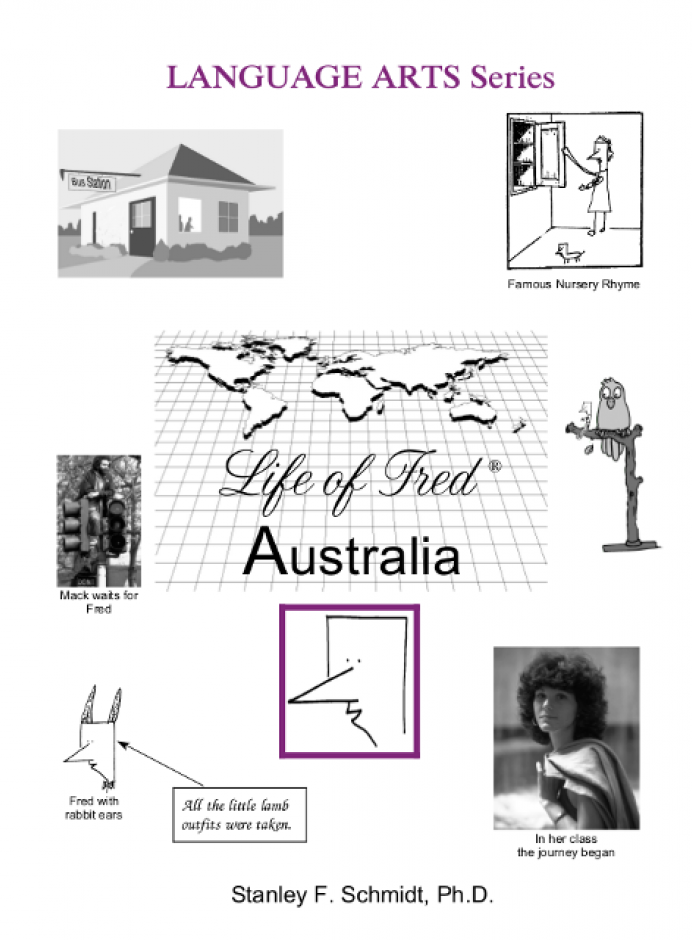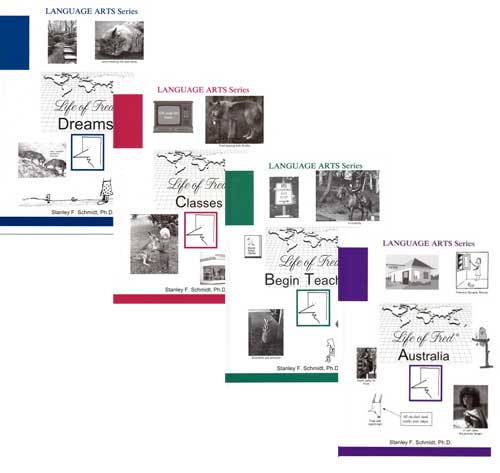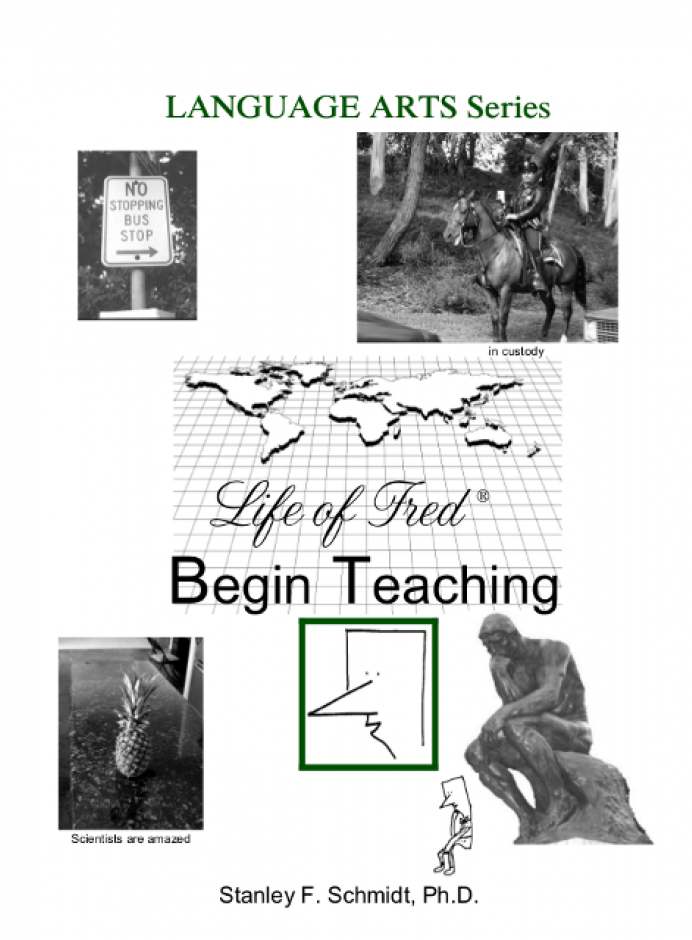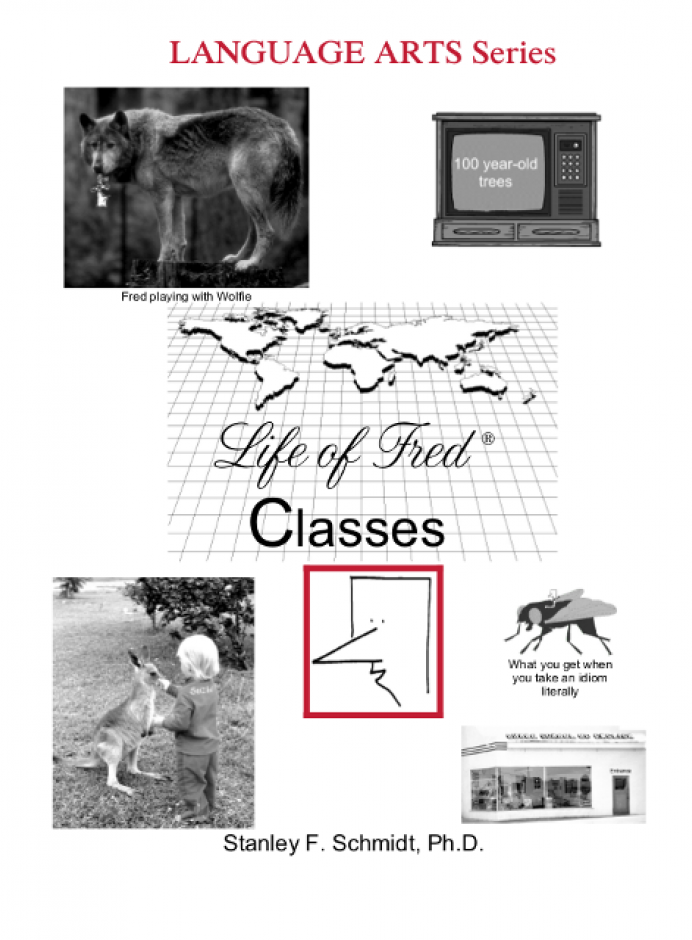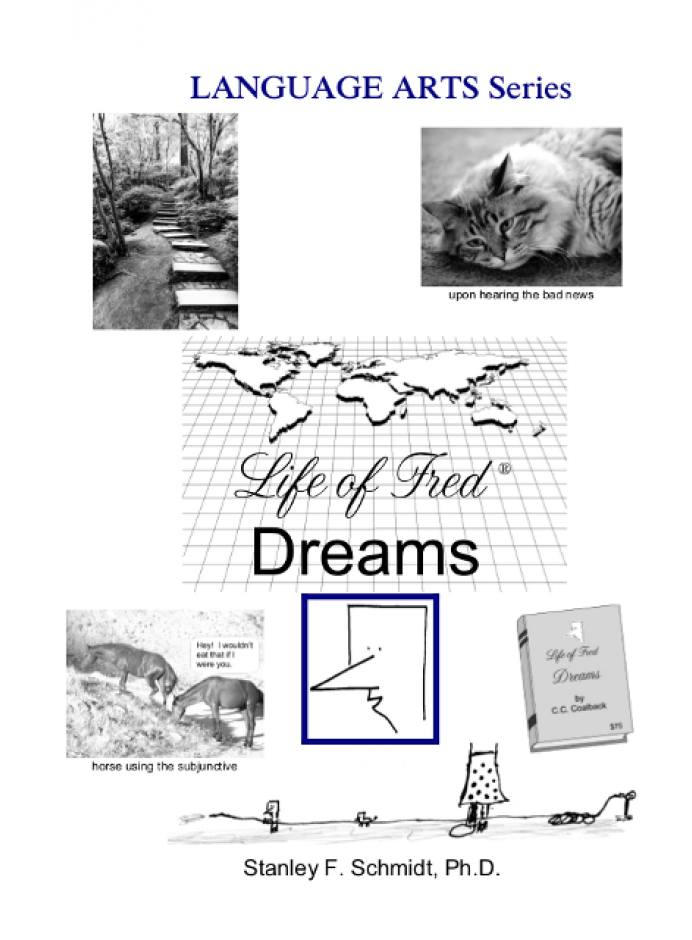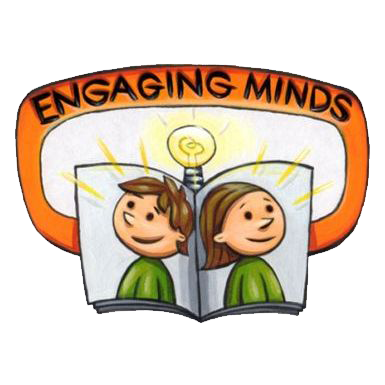Z-Twist books
Life Of Fred Lanuage Arts Series
Life Of Fred Lanuage Arts Series
Couldn't load pickup availability
If you are looking for a fun way to study High School English then look no further than the continuing adventures of Genius Fred in this Life of Fred, Language Arts Series. Written in Freds typical humourous style discussing all different aspects of the english lanuage in this series of four books.
All books come in hardcover.
Australia: Book one of four
Seven billion = 7,000,000,000, Indentation to begin paragraphs, Three punctuation marks to end a sentence, Punctuation began common usage around 1450 (with the invention of the printing press), Two to the third power, Subjunctive mood used much more frequently in German, French, and Latin than in English, Postscripts, Picoseconds, Six question words (who, when, where, why, what, and how), State abbreviations, Correct way to hold a pencil, Plurals of words (two cases), Irregular plurals, Finding your calling in life, Opening and closing salutations, Only the first word in a closing salutation is capitalized, Australia is between the Indian and the Pacific oceans, Silent letters, Islands vs. continents—the four questions to ask, Homonyms, Topology, Daniel Boone, Is noon a.m. or p.m.?, Proofreading, A bus with no door, Exaggerating vs. lying, Hyperbole, That vs. which, Land of Nod, Using commas in lists, Five- and fifteen-year-olds think about clothing differently, When to omit the s after the apostrophe when forming a possessive, When to ask questions, Magnetic north pole is moving, Pole reversals, Continual vs. continuous, Less vs. fewer, Heteronyms, Two past tenses of kneel and of dream, Verbs defined, Winter in June, How to have two summers and no winters each year, Prefixes, Stich and hemistich, Alliteration, International Date Line, Five ways to make plurals, Two uses of an apostrophe, Autobiography, Vowels, Six ways to make plurals, Two past tenses of sneak, A seventh and eighth way to make plurals, Which countries use the metric system.
Begin Teaching: Book two of four
Ellipsis, Litotes, Meter = 39 inches, Ninth way to make plurals, Since can be ambiguous, The whole point of English, Green’s Theorem in Space, Consonants as defined by air flow, Location of a comma changes the meaning, 14ºC = 57ºF, What the United States, Liberia, and Myanmar have in common, Eleven ways to make plurals, 5 cm = 2 inches, Run-on sentences, Comma splices, Appositive phrase, Conjunctions, Lyrics, Iambic foot, Pentameter, Trochaic, anapestic, and dactylic feet, Scansion, Twelfth way to make plurals, Three ways to fix a comma splice, Eager vs. anxious, Not looking at the spelling of a word to decide whether to use a or an, Long vowels, Twenty-two words that don’t contain a, e, i, o, or u, Idioms, Affect and effect as verbs, Affect and effect as nouns, Nouns defined, Lie vs. lay, Transitive and intransitive verbs, The Australian Environment Protection and Biodiversity Act, Pronouns defined, What some people “know,” Making “happy as a clam” make sense, Scare quotes, Sixteen ways to make plurals, Cardinality of a set, Numbers—when to use words and when to use numerals, Subject-verb agreement when there is a compound subject, When to use du and when to use Sie in German, Literary symbolism, One hundred best first lines from novels, What is means to be a graduate student, Should the saying be, “The early worm gets eaten”? Dictionary vs. thesaurus, Conjugation of a verb in three tenses, Existentialism defined, The three cases in which a preposition is capitalized in a book title, The two numbers in English (singular and plural—I and we) and the three numbers in Russian, Six tenses in English, Correction: 12 tenses in English.
Classes: Book three of four
The overall picture in business, math, football, life, and English, Seven parts of speech, Tense is the Latin word for time, Prepositions explained in 30 seconds, A sentence with 16 prepositional phrases, Adjectives, Three kinds of adjectival errors, Four uses of italics, Simplifying the 12 tenses, Positive, comparative, and superlative forms of adjectives, Proper nouns used as adjectives, Suffix, Using the present tense to indicate things that are always true, Direct and indirect objects, Often the least effective way to teach is to lecture, Nominative, objective, and possessive cases, Simile, Schwa, Auxiliary verbs, Elliptical construction, Formal, informal, nonstandard, and general English, Two ways our brains work, The four emotions (glad, sad, mad, and afraid), Counter words, The three reasons to write, Adverbs, The three parts of mothering, The seven rules for when to double the final consonant when adding the suffix –ed (and simplified down to one rule), Intersection of sets, Less vs. fewer, Infinitive form of a verb as subject, object, adjective, and adverb, Holloware, flatware, and how to set a table, Prepositions at the end of sentences, Euphemisms and minced oaths, Subjunctive, imperative, and indicative moods, Antecedents of pronouns, Nauseous vs. nauseated, Stream of consciousness writing, Hyphens can change meaning, When to hyphenate compound adjectives (the six rules).
Dreams: Book four of four
Why kids don’t go to jail, Brackets, parentheses, and braces, Three ways to make a break in a sentence (commas, parentheses and dashes), How to type an em dash on a computer, Which words ending in –nger are pronounced with a hard g, Use of [sic], Where to put the question mark(s) in Did he ask, “What time is it”, What to use instead of parentheses inside of parentheses, Twenty-six research doctorates and two professional degree doctorates, Ruminants and why horses are unlucky, Three uses of a dash, When a question mark or an exclamation mark can touch a dash, What not to say to little children, Metaphors, The only time a period can touch a dash, When acronyms lose their periods or their capitalization, Analogy, Emphatic form of a verb, Compound subjects, Compound verbs, Simple, compound, and complex sentences, Coordinating and correlative conjunctions, When to express numbers as words or as numerals, Conjunctive adverbs, Figurative language (comparison, degree, and association), Two rules for making outlines, Parallel construction, Synecdoche, The difference between metaphor and metonymy, Allusions in writing, Good spelling implies high IQ, Inverse, converse, and contrapositive, Logical equivalence, The four times to use the passive voice, How to pronounce viz. e.g. and i.e., Three keys to good writing, Unnecessary prepositions, How to write an essay, Plagiarism, Etymology, Two times you can use sentence fragments, Three uses of the slash mark (/), Why we capitalize the pronoun I, Ellipsis.
Share
